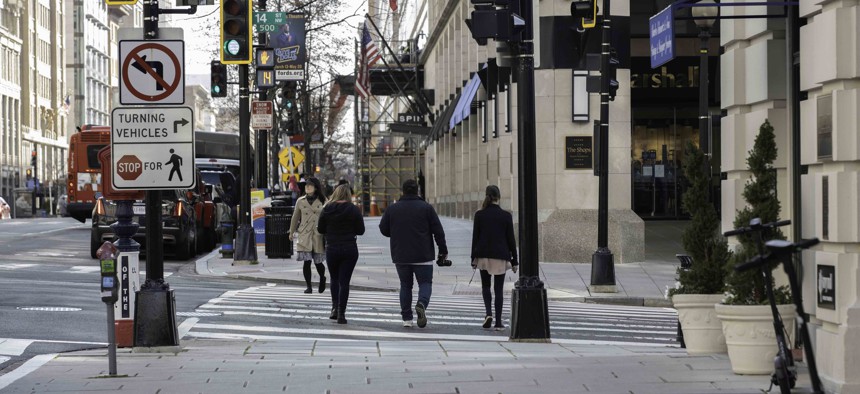A Troubling Trend: Pedestrian Deaths Continue to Rise

Aurora Samperio/NurPhoto via Getty Images
The number of people killed on U.S. streets in early 2022 was 5% higher than the same period a year earlier, showing a dramatic increase over the last decade.
The number of people killed while walking U.S. streets increased yet again in the first half of 2022, demonstrating that the dramatic increase in pedestrian deaths over the last decade shows no sign of stopping.
The Governors Highway Safety Association, a group of state safety offices, estimated that the number of pedestrians who died in early 2022 was 5% higher than the same period a year earlier. That amounts to at least 3,343 people, according to a new analysis by GHSA based on preliminary data. (This year’s data did not include information from Oklahoma, but GHSA compared the data from the remaining states between the two years.)
“The causes are still the same—at least the ones everyone can agree on—dangerous driving, larger and heavier vehicles and inadequate infrastructure,” said Russ Martin, GHSA’s senior director of policy and government relations. “We want to maintain a sense of urgency about this, because things are kind of stagnating.”
Still, the trends varied significantly by state.
Florida saw the highest increase in the number of deaths, with 29 more than in the previous year. Virginia, Oregon, Illinois and Pennsylvania had the next-highest increases.
All told, 24 states reported increases in pedestrian deaths. For 15 of them, 2022 was at least the second year in a row where pedestrian fatalities increased.
Meanwhile, four states reported no change between the first half of 2021 and the same period a year later.
Twenty-one states and the District of Columbia saw decreases between the two years, but only two states (Kansas and Nevada) saw two straight years of declines.
The biggest decrease came in Ohio, which saw a decline of nine pedestrian deaths in early 2022 compared to a year prior. Louisiana, Michigan and Texas reported the next-highest declines.
The most dangerous states for pedestrians—in terms of per capita death rates—are predominantly in the southern part of the country, from North Carolina to California. Sun Belt states have long had more deadly streets for pedestrians because more people walk in these states and because the areas saw more growth, particularly at a time when auto-centric infrastructure was more prevalent.
Martin said he hopes state and community leaders will take a closer look at the results for their own jurisdictions to make sure they are doing all they can to reduce pedestrian deaths.
The federal Transportation Department started a nationwide campaign last year, calling for a “safe systems” approach to reducing sky-high traffic fatality numbers, including the growing number of pedestrian deaths.
But many of the actions the federal government can take, Martin noted, would take several years to implement and even longer to affect the overall trends.
Still, Martin said, the federal government can, for example, update its rulebook on safety features for roads or mandate better pedestrian protection for new vehicles. Even though the process is long for pushing out those changes, they are important, Martin said.
Other changes, like new laws or infrastructure improvements, can take less time.
“The first step is raising awareness, because we don’t see enough attention being brought to this issue,” Martin said. “We often feel like if we’re not beating the drum on some of these problems, they’ll just be ignored. And that would be a catastrophe.”
Daniel C. Vock is a senior reporter for Route Fifty based in Washington, D.C.
NEXT STORY: How to build future-facing ERP






